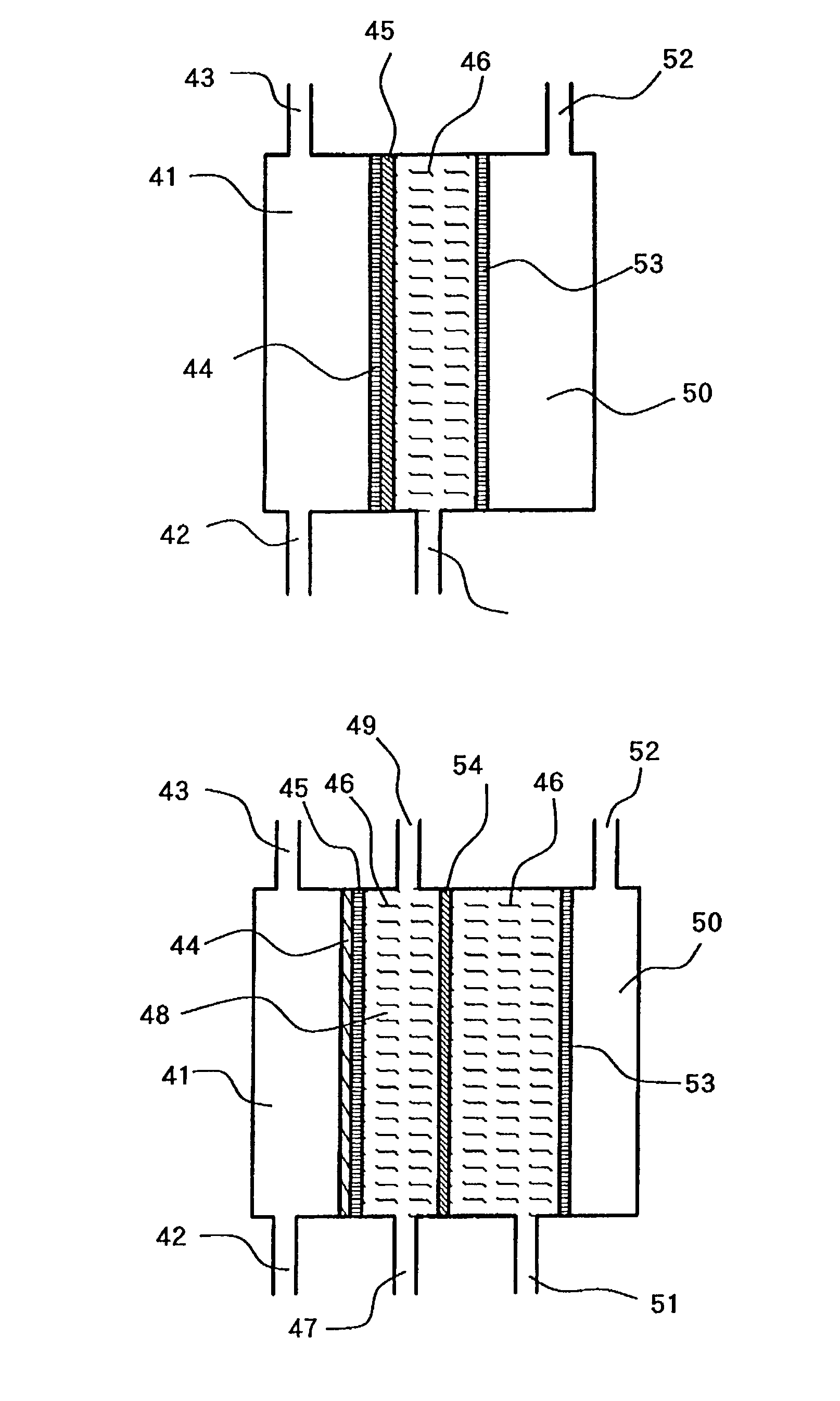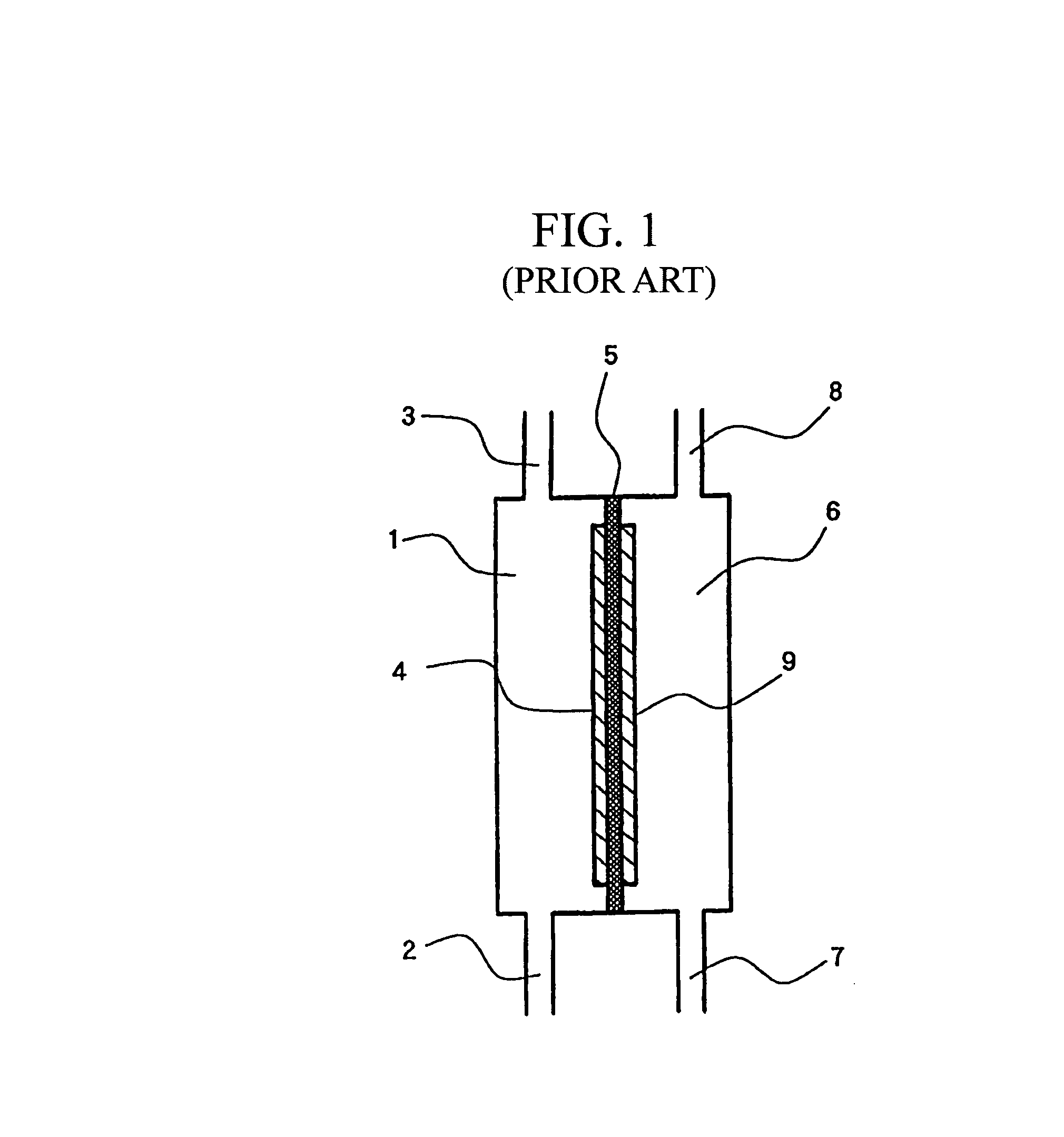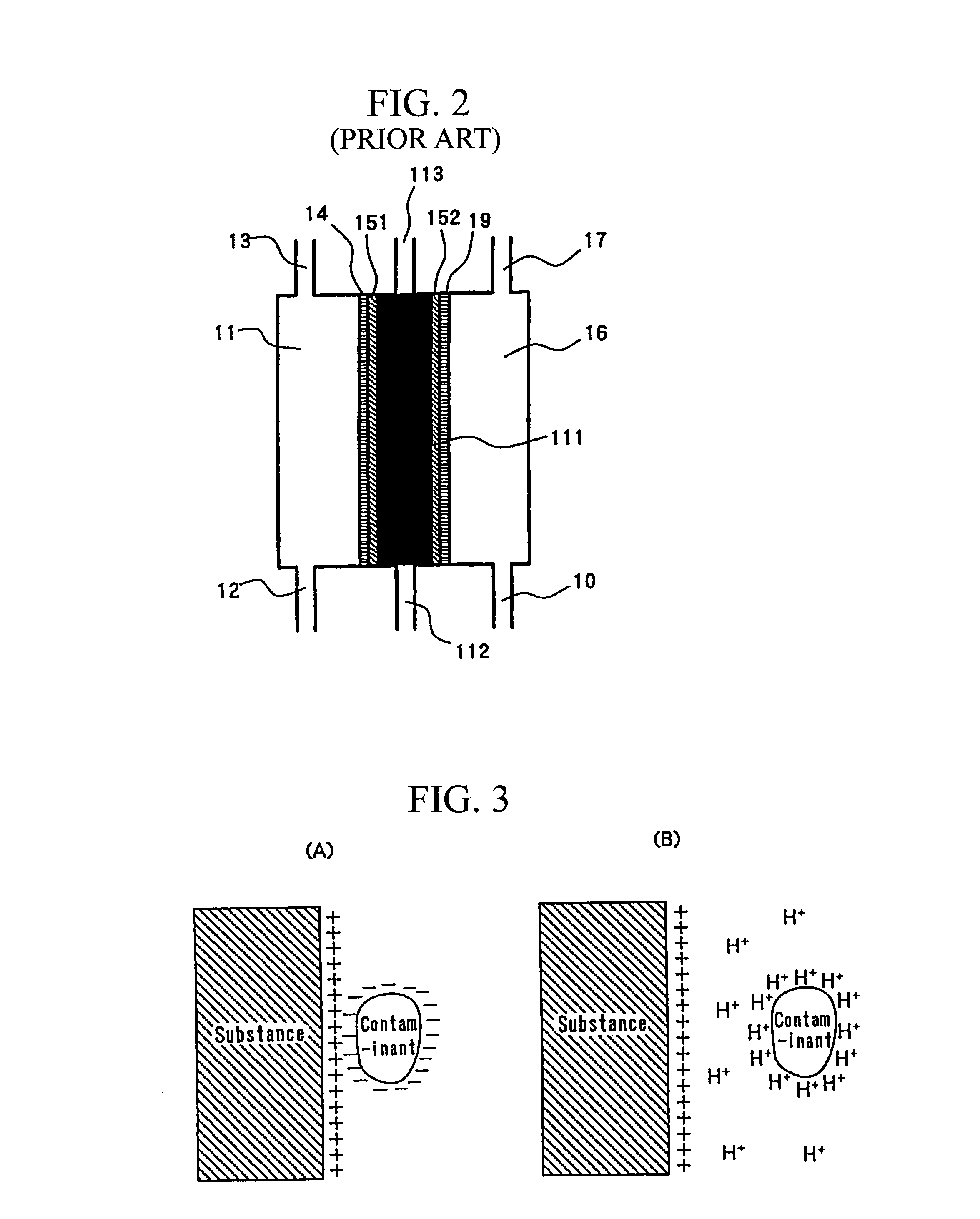Electrolytic cell for producing charged anode water suitable for surface cleaning or treatment, and method for producing the same and use of the same
a technology of electrolysis and charged anodes, which is applied in the direction of water/sewage treatment by oxidation, manufacturing tools, separation processes, etc., can solve the problems of vanionic contaminants on the surface being likely to dissolve, and achieve the effects of improving surface cleaning or treatment performance, efficient production of charged water, and improving the production efficiency of charged water
- Summary
- Abstract
- Description
- Claims
- Application Information
AI Technical Summary
Benefits of technology
Problems solved by technology
Method used
Image
Examples
embodiment 1
[0070]FIG. 4 illustrates the new three-chamber type electrolytic cell made by improving the conventional three-chamber cell in which the perforated electrode plate shown in the drawing is used.
[0071]The anode 53 was closely attached to the cation-exchange membrane before the improvement. Therefore, the electrolytic water flowed along the anode plane, and the electrolysis reaction proceeded between the electrode and ion exchange membrane. As a result, the electrolysis products were formed first between the electrode and ion exchange membrane, and then moved toward the backside of electrode by diffusion or the like.
[0072]In the present invention, on the other hand, the anode is perforated to provide the passages for electrolytic water passing over the electrode surface, in order to utilize the electrolysis product more efficiently. As a result, the electrolytic water flows not only on the electrode surface but also thorough the holes opened in the electrode. The relationship between o...
embodiment 2
[0076]The electrolytic cell shown in FIG. 5 has a characteristic structure in that the feed water flows into the middle chamber 46 and the electrolyzed water discharged from the anode chamber 50 is recovered as the charged anode water. The cell structure as those shown in FIG. 4 are given the same number and their descriptions is omitted.
embodiment 3
[0077]The electrolytic cell structure includes a mechanism to adjust the position of anode 53 in the current flowing direction, as shown in FIG. 6. This structure is provided with a frame, outside of the cell, which holds the mobile anode position-adjusting mechanism.
[0078]The anode position adjusting mechanism typically is composed of an anode-supporting rod provided with a screw, by which the anode position can be adjusted.
[0079]The structure is described in more detail. This structure makes it possible to adjust position of the anode 53, shown in FIG. 4 for embodiment 1, in the current passing direction. More specifically, the anode-supporting rod 58 is set at approximately center of the anode 53 in the current passing direction, held by the holding frame 57 provided in the anode chamber 50 in such a way to be movable in the axial direction, and screwed into the position-adjusting mechanism 56, provided outside of cell, via the O-ring 55 which seals the anode-supporting rod 58. T...
PUM
| Property | Measurement | Unit |
|---|---|---|
| reduction potential | aaaaa | aaaaa |
| reduction potential | aaaaa | aaaaa |
| temperature | aaaaa | aaaaa |
Abstract
Description
Claims
Application Information
 Login to View More
Login to View More - R&D
- Intellectual Property
- Life Sciences
- Materials
- Tech Scout
- Unparalleled Data Quality
- Higher Quality Content
- 60% Fewer Hallucinations
Browse by: Latest US Patents, China's latest patents, Technical Efficacy Thesaurus, Application Domain, Technology Topic, Popular Technical Reports.
© 2025 PatSnap. All rights reserved.Legal|Privacy policy|Modern Slavery Act Transparency Statement|Sitemap|About US| Contact US: help@patsnap.com



